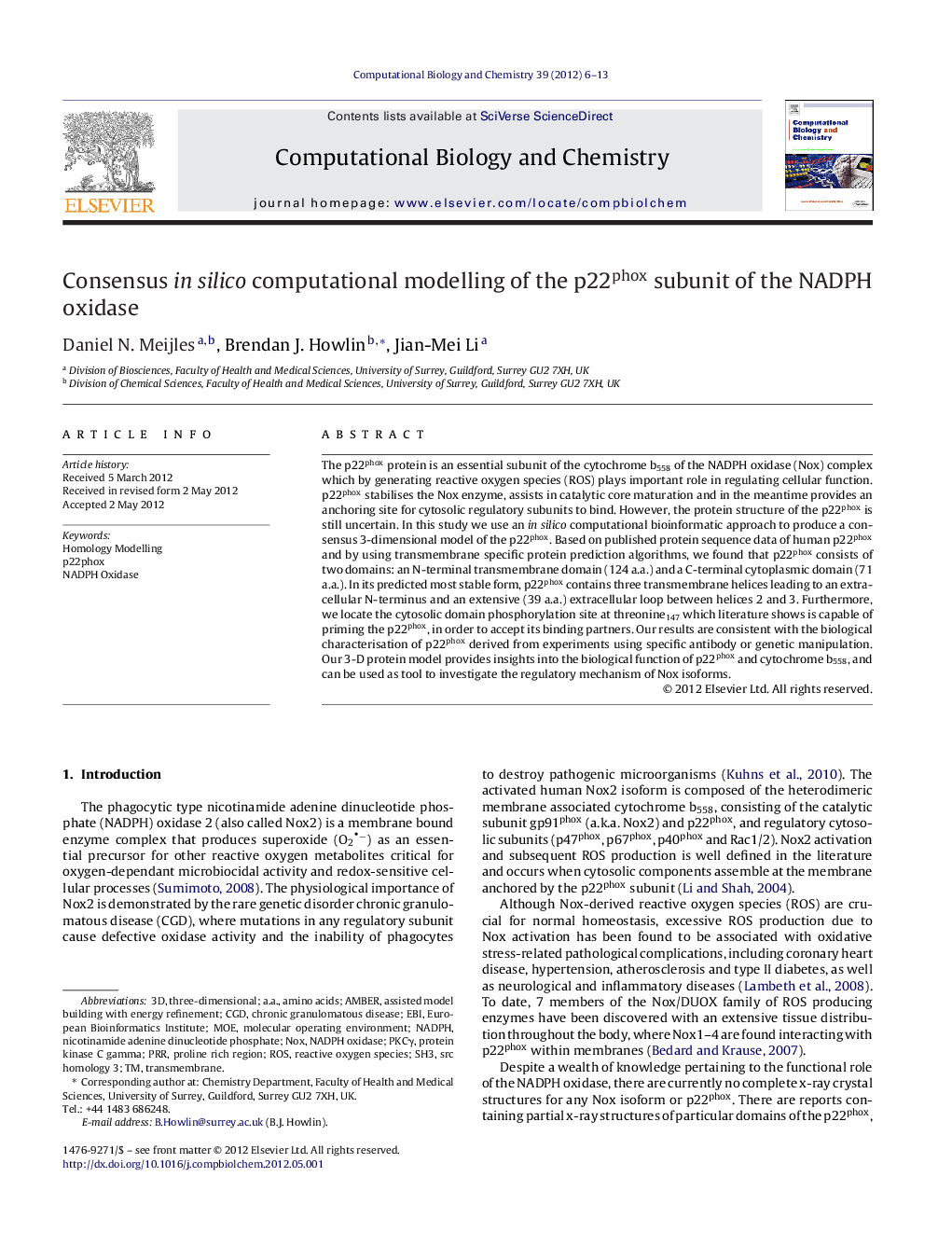| Article ID | Journal | Published Year | Pages | File Type |
|---|---|---|---|---|
| 15197 | Computational Biology and Chemistry | 2012 | 8 Pages |
The p22phox protein is an essential subunit of the cytochrome b558 of the NADPH oxidase (Nox) complex which by generating reactive oxygen species (ROS) plays important role in regulating cellular function. p22phox stabilises the Nox enzyme, assists in catalytic core maturation and in the meantime provides an anchoring site for cytosolic regulatory subunits to bind. However, the protein structure of the p22phox is still uncertain. In this study we use an in silico computational bioinformatic approach to produce a consensus 3-dimensional model of the p22phox. Based on published protein sequence data of human p22phox and by using transmembrane specific protein prediction algorithms, we found that p22phox consists of two domains: an N-terminal transmembrane domain (124 a.a.) and a C-terminal cytoplasmic domain (71 a.a.). In its predicted most stable form, p22phox contains three transmembrane helices leading to an extracellular N-terminus and an extensive (39 a.a.) extracellular loop between helices 2 and 3. Furthermore, we locate the cytosolic domain phosphorylation site at threonine147 which literature shows is capable of priming the p22phox, in order to accept its binding partners. Our results are consistent with the biological characterisation of p22phox derived from experiments using specific antibody or genetic manipulation. Our 3-D protein model provides insights into the biological function of p22phox and cytochrome b558, and can be used as tool to investigate the regulatory mechanism of Nox isoforms.
Graphical abstractFigure optionsDownload full-size imageDownload as PowerPoint slideHighlights► A new model for the P22phox protein is presented. ► A comparison of 2, 3 and 4 helix models is discussed. ► Experimental evidence and modelling studies favour the 3 helix model. ► The new model has potential in drug design investigations.
